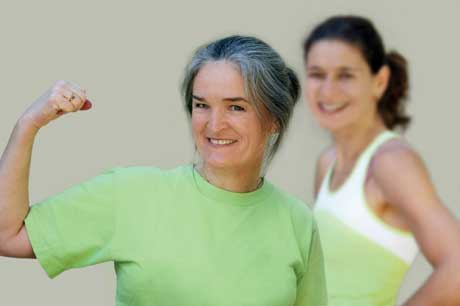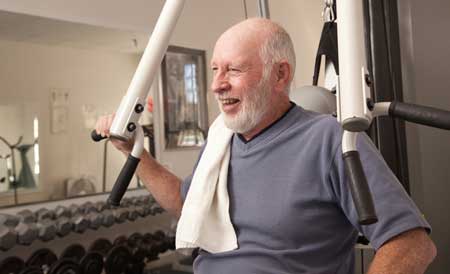Vitamin D: Bone health and more!
For decades, we have known that vitamin D builds stronger bones by helping your body absorb calcium. Recent research suggests that vitamin D may also decrease your risk for breast, prostate, and colon cancer.
“Besides helping to prevent osteoporosis, there is strong evidence from the last five to 10 years that maintaining your levels of vitamin D actually helps to reduce cancer,” says Heather Chappell from the Canadian Cancer Society.
“We still don’t know what the optimal vitamin D levels are or how it works to prevent cancer, but the relationship is there,” she says.
Vitamin D is often called the “sunshine vitamin” because under the right conditions in the sun, the skin can produce its own vitamin D. However, during the winter, people in Canada produce very little vitamin D. The sunlight is too weak and we need to wear a lot of clothing.
Even in the summer, people may not get enough vitamin D:
- Sunscreens and sun-protective clothing block the skin from producing vitamin D.
- Dark skin does not produce vitamin D as efficiently as lighter-pigmented skin. Adults with highly pigmented skin need 10 to 20 times more sun exposure to make the same amount of vitamin D.
- Older adults do not create vitamin D from sunlight as efficiently as younger people do. They may also spend less time outdoors.
Getting vitamin D through food and supplements
For these reasons, many health organizations suggest that you increase your vitamin D intake through diet, supplements, or both. Food sources of vitamin D include fortified foods, such as cow’s milk and soy or rice beverages. Margarine and fish, such as salmon and tuna, are also good sources of this vitamin.

Eating Well with Canada’s Food Guide advises people over the age of 50 to take in three servings of milk or fortified soy beverages a day. It also recommends a supplement of 400 IU (10 micrograms) of vitamin D every day.
“It’s very hard to get enough from what you eat,” says Dr. Kerry Siminoski, a specialist in bone disorder and bone health at the University of Alberta. “Liver is a source, but when is the last time someone told you they were eating liver for dinner? Or creamed salmon five days a week? With supplements, you ensure that you get what you need without short-changing your other nutritional requirements or exceeding your caloric intake.”
How much is too much?
Because the benefits of vitamin D go beyond bone health, several organizations recommend taking more than Health Canada does. Despite the potential benefits, Health Canada cautions that high doses can be toxic. However, if you want to take between 1,000 and 2,000 IU of vitamin D a day (from food and supplements combined), you should be safe. “There’s a huge safety margin for vitamin D as opposed to calcium,” says Dr. Siminoski.
Talk with your doctor, pharmacist, or dietitian to see if you could benefit from a daily vitamin D supplement.
Click Here for print PDF file – Healthy Eating – Vitamin D – bone health and more
Myths About Exercise and Aging
By: Jan Cochrane, RN, BSN, CDE
People often pass along myths or misconceptions from one generation to the next. For instance, your mother may have told you it’s important to wear clean underwear in case of an accident, something she probably learned from her mother. But nurses will tell you that no one in acute care–or anywhere for that matter–even notices something so trivial during the time of an accident!
Here are some myths about exercise and aging that researchers have studied over the years and proven to be wrong:
Myth #1: Older people shouldn’t do demanding activities such as raking leaves or shovelling snow.
First of all, it is difficult to define “older”. There are some 50-year-olds who cannot keep up with 70-year- olds who have an active lifestyle. If you are generally active, doing heavier tasks shouldn’t be a problem. However, if you haven’t been active, start slow. Walking is always a safe way to start.
The great ball player Satchel Paige (1906-1982) once asked this excellent question: “How old would you be if you didn’t know how old you was?”
Myth #2: As you get older, you should avoid lifting heavier objects such as groceries.
Au contraire! This is the time to increase strength in the muscles by exercising at least twice a week. It can be as simple as carrying the laundry or climbing stairs. Remember: “Use it or lose it.”

Myth #3: Don’t exercise if you have heart problems or high blood pressure.
Don’t forget that your heart is a muscle that needs exercise just like all others! If you have had a recent heart attack, check out programs that guide you to getting exercise back into your life. You could be doing more harm by not moving.
One last reminder: “Running late does not count as exercise.”
Learn more from these Active Aging Canada resources:
- Preventing Falls in Older Adults
- The Power of Strength Training for Older Adults
- Exercise for Your Heart’s Sake: It’s Never too Late
About the Author
Jan Cochrane, RN, BSN, CDE, has worked in home care and gerontology. She is a diabetes educator with a passion for encouraging healthy lifestyles.
Click Here for print PDF file – Active living – Myths About Exercise and Aging

- Categories
Recent Posts

